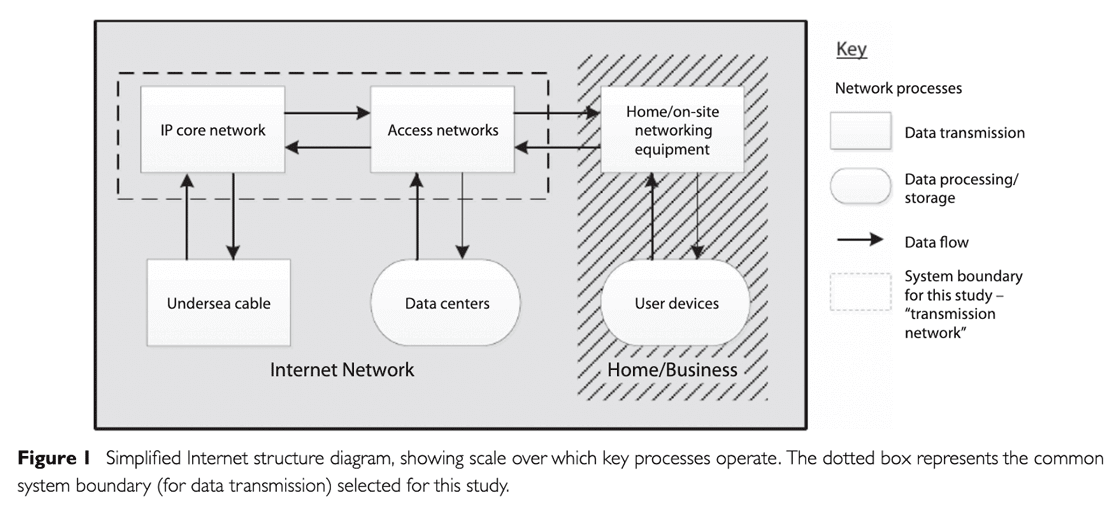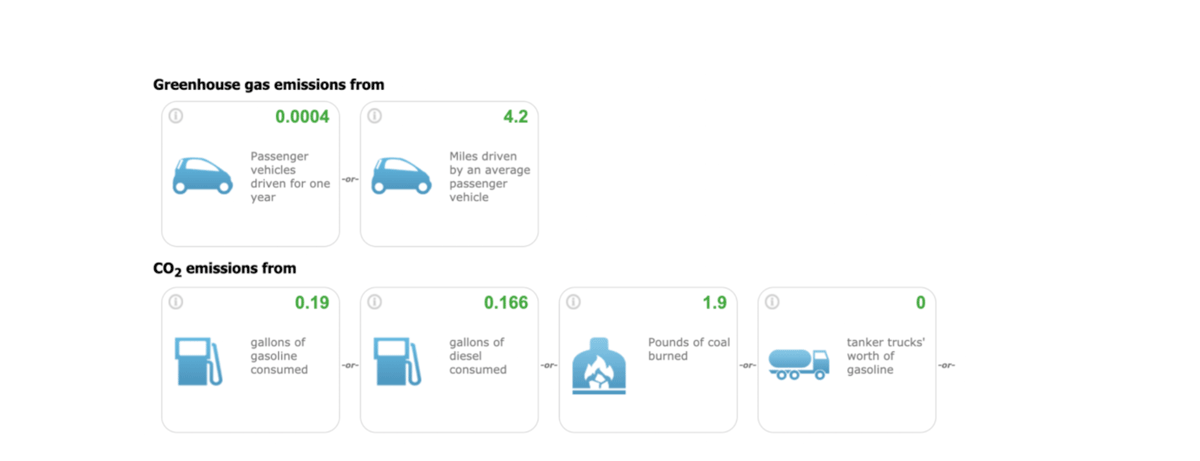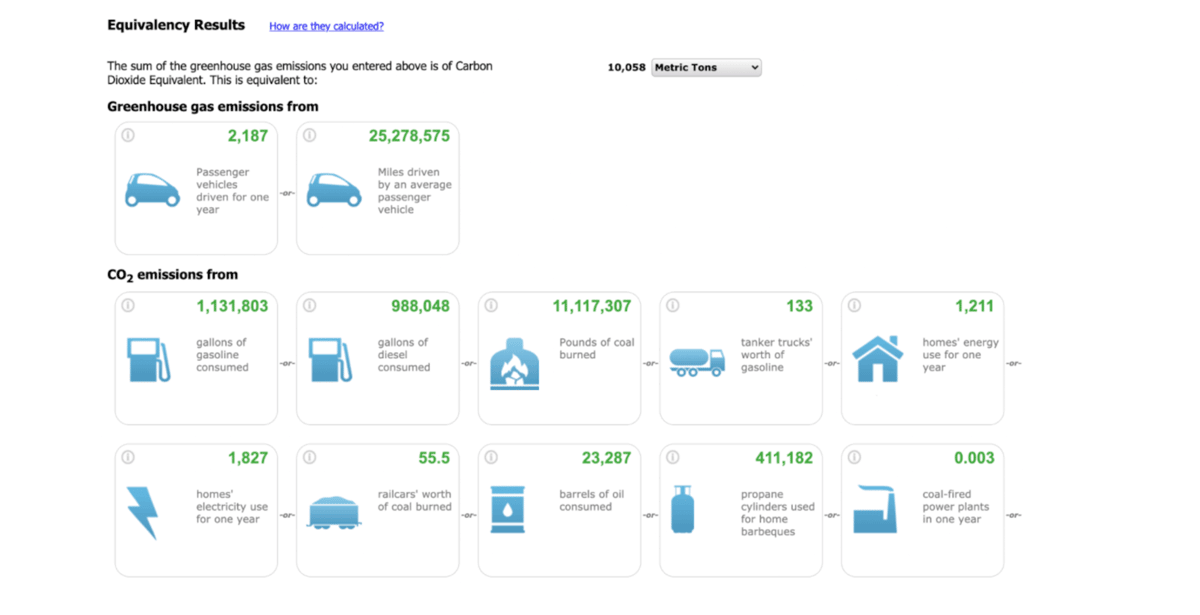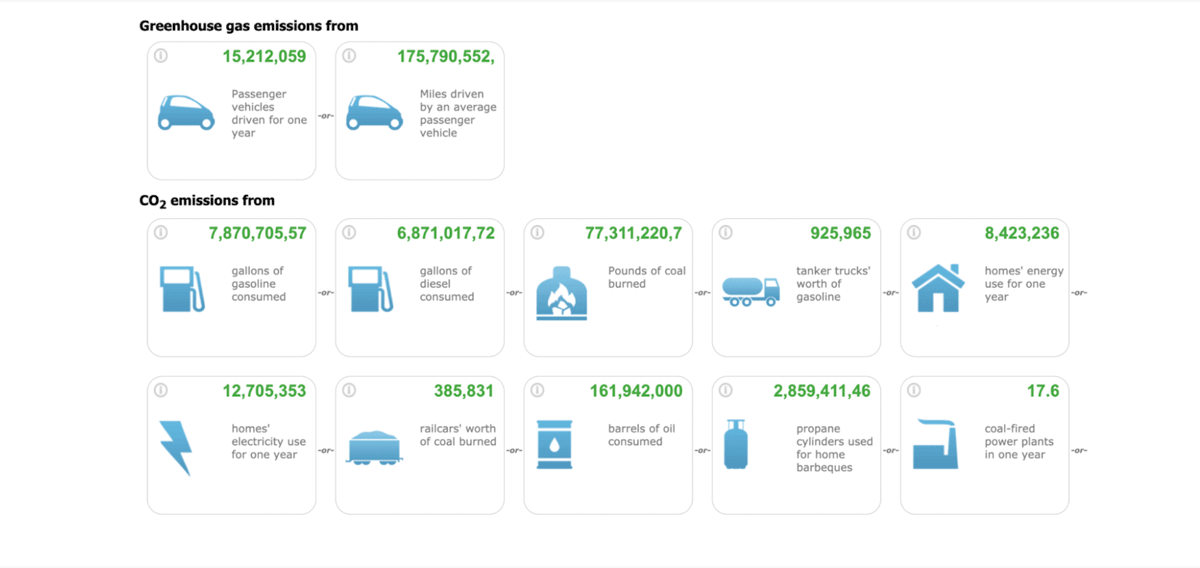A slow website affects customer happiness, increases abandonment, lowers brand experience, impacts SEO, frustrates site admins, and just kinda makes everything suck. Last month, we released a series on Website Performance to help establish a baseline for your website, review the key levers we look to for performance improvements, and point you in the right direction as you get started.
Obviously, a faster website is great for your customers and other site admins. As we were digging into caching and server tuning for performance, one of the interesting things that came up for us was around how those same performance improvements will also reduce carbon emissions—slowing climate change and generally being better for the planet.
Electricity runs the internet
You might have noticed that all the massive data centers (like Amazon Web Services) are typically located in small towns next to dams or a power station. Data centers require massive amounts of electricity to power and cool all of their machines.
Some of that electricity generation is fairly renewable. Here in the Pacific Northwest, hydroelectric power makes up the majority of electricity production (though it varies with water conditions). However, in 2020 the US Energy Administration reported 60% of US electricity production comes from burning fossil fuels like coal.
There have been several studies done over the years to try and measure the carbon footprint of the internet. It starts with measuring the consumption of the devices that run the internet. That includes the servers (which are always on), their networking equipment, redundancy systems (since we expect it to never go down), and cooling systems.
A study by Raghavan and Ma went several steps further to include the carbon impact of the manufacturing processes to create that equipment, replace equipment, and the home networking and end user computers and devices where we view the internet.

They estimate that the Internet consumes between 170–307 Gigawatts of power (Hoover Dam is a 2 GW facility to put those numbers in perspective).
An interesting conclusion of their study is the internet in some cases is replacing alternatives — specifically transportation which consumes 61% of the world's energy—so potentially it is more than offsetting its carbon emissions by decreasing travel needs. They calculated that by “replacing one in four plane trips with video conferencing, we save about as much power as the entire Internet, and in particular, we save a lot of oil.”
Back to your website and what you can do for Earth Day
So a poorly-performing, slow-loading website is also worsening the climate because upstream every Gigabyte of data that has to transfer across the internet and render in your browser is consuming a tiny fraction of electricity. One estimate we found cited a 2015 report that estimates 0.06 kWh/GB (measured as kilowatt-hours per gigabyte [kWh/GB]).
For example, the uncached Bear Group homepage has 5.2MB (0.0053GB) of data associated with it. So .0053 GB x .06 kWh = .000318 kWh of energy is needed to load our homepage. We’ve had about 7,500 page views on our homepage over the last 12 months, so that is 2.385 kWh just to light up our homepage.

If you plug that into the Greenhouse Gases Equivalent Calculator, it's the equivalent of driving 4.2 miles to serve our homepage for an entire year. Not that alarming in the limited context of our homepage (especially for all the great information it has on it).
Video on the internet is a bigger problem, specifically binge-watching streaming services like Netflix and YouTube. The Cloud Paradox reports that “video streaming makes up 71 percent of downstream data during peak usage period in North and South America, with Netflix responsible for 35.2 percent of that data” in this 2019 article.

Take something meaningful to society, like the “Baby Shark Dance” video on YouTube, and it’s about 28.5 MB once transferred to your computer. (Baby Shark Dance is somehow the #1 most viewed video with 8.3 billion views—by the way, Earth’s human population in 2019 was 7.674 billion.) Using the same formula, that would be 142 million kWh of electricity, equivalent to 11 million pounds of burned coal to serve that absolutely ridiculous single video… which is something the collective 8.3 billion of us should probably feel some remorse over.
 If we go a magnitude higher, the entirety of the 4.2 billion pages on the internet is about 98.7 billion kWh—assuming average page weight of 5MB of data, loading each page just one time is like 15 million cars on the road, or powering 8.5 million homes.
If we go a magnitude higher, the entirety of the 4.2 billion pages on the internet is about 98.7 billion kWh—assuming average page weight of 5MB of data, loading each page just one time is like 15 million cars on the road, or powering 8.5 million homes.

And the thing is...
Your website is not the biggest contributor. For example, the robots scan millions of pages a day and the video streaming services certainly have you beat (and are outside your control).
But there is one thing you can control—serve up an IDENTICAL experience on your website with fewer gigabytes of assets (make that 15MB page a 5MB page)! Just by optimizing your media, making sure your caching is set correctly, using standard definition video instead of HD on your homepage, compressing your Javascript and CSS, and perhaps using a content delivery network (CDN).
All of these recommended website performance improvements (at a very macro level) across trillions of requests per second on the internet mean more efficient use of resources, as well as fewer dams and coal-powered electrical plants.
You can EASILY cut down your page weight by 50%, AND at the same time be improving your customer experience. This, in turn, helps to lower power consumption and counter global warming. So it’s good for your customers, good for business, and good for the planet.
